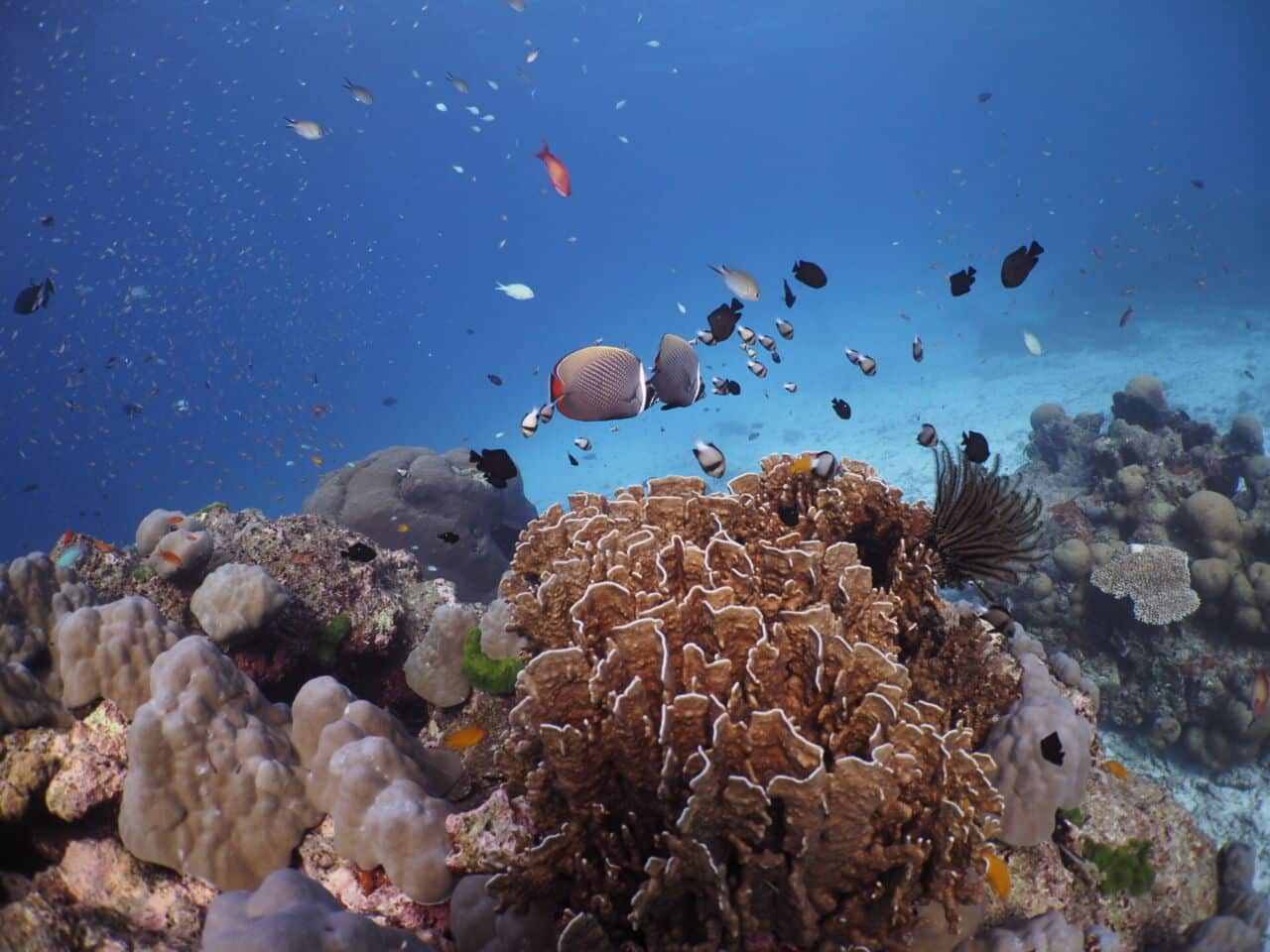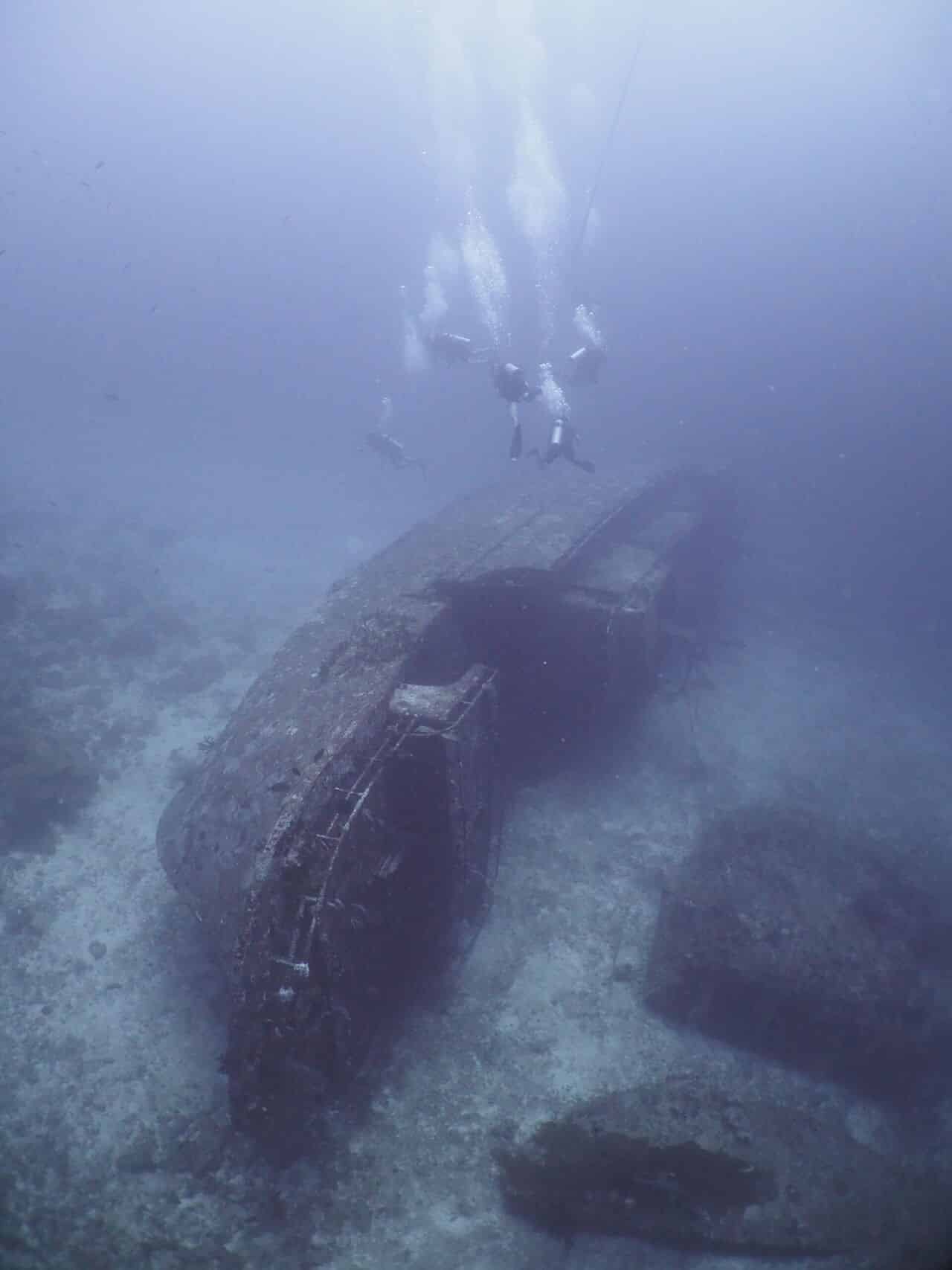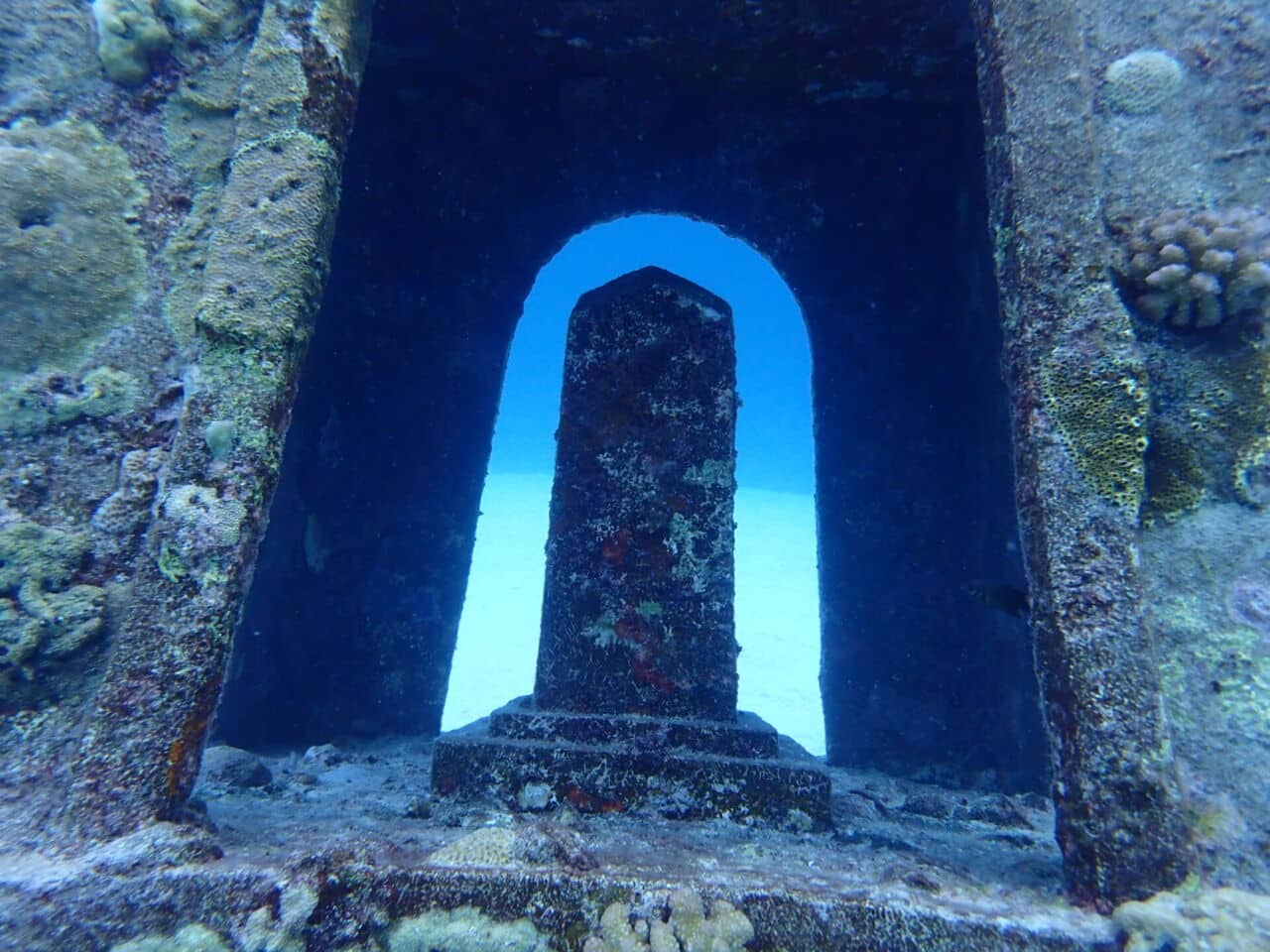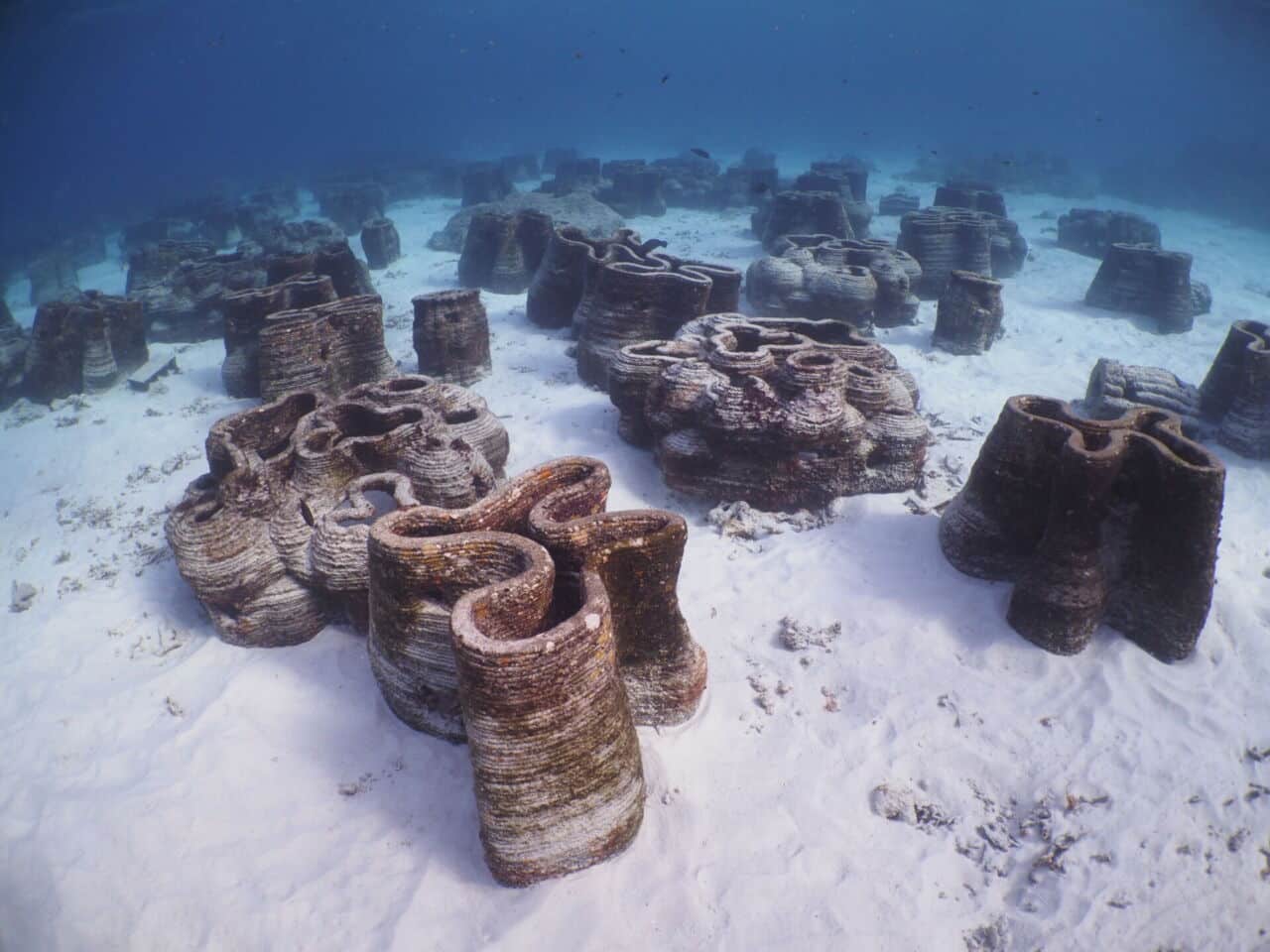Dive With Us in the Similan Islands: #1 Hideaway Bay and Tuna Wreck
There’s a quiet kind of anticipation that comes with the first dive of a liveaboard trip. That moment when your face slips below the surface and the noise of the world finally fades into blue…
The surrounding giant boulders of Hideaway Bay form a sheltered area that is part of island #5 of the Similan Islands. The water within the bay is gentle and calm. I sit on the edge of the dinghy, heart steady, mind quiet, and then I roll back into the ocean and start my descent.
The check dive begins
This is a check dive, a soft reintroduction to the ocean, and there’s no rush here. As bubbles rise and the surface slips away above me, my body begins to remember. The muscle memory takes over — finding trim, adjusting breath, reaching instinctively to check gauges and straps. It’s only been minutes, but already the sea feels like home again.
Exploring Hideaway Bay
As I continue to descend, Hideaway Bay unfolds. A wide expanse of soft white sand stretches out beneath gentle rays of sunlight. I hover for a moment above the seabed, pausing to appreciate one of my favourite views under the ocean, before continuing to explore.

Scattered across the sandy bottom are vibrant coral bommies, each one bursting with colour and life. I follow my dive guide, drifting from one to the next, briefly checking in the crevices for cleaner shrimp. Let’s have a closer look later…
We begin to follow the gentle sloping reef of the bay, down into the depths. It’s a little bit darker down here — the ocean is a rich shade of blue inviting me to discover what is hidden. I’m always on the hunt for sharks, and this feels like the perfect chance!
Finding Tuna Wreck
We follow the sandy bottom with our left shoulder to the reef, letting the slope guide up deeper. After a few minutes, a shadow begins to take shape in the distance. The Tuna wreck appears, resting quietly on the sand at 36 metres – 40 metres. The small fishing boat that was purposefully sunk by the National Park in 2003 to create an artificial reef. It lays on its port side, with the shallowest part of this 30 metre vessel reaching a depth of 28 metres. it’s now fully claimed by the sea.

I hover above the wreck watching glassfish shimmer in dense clouds around its frame, parting as I approach, while lionfish hang motionless within the beams. Circling slowly, I peer into crevices where moray eels hide and searching the sand nearby for signs of life. Perhaps a stingray buried beneath the sand, or the distinct tail of a leopard shark…
We’re all diving with Nitrox, but it’s time to shallow up and keep an eye on our computer’s NDL. Leaving the wreck behind, I follow the sandy slope with my left shoulder along the edge of the bay. The reef rises gently and soon the landscape shifts. Soft sand gives way to a vibrant stretch of mature hard coral colonies. Schools of fusiliers and snapper weave effortlessly through the coral, and I hover for a moment again, taking it all in — the colours, the movement, the quiet noise of the reef at work.
Back to the Bay
After a few minutes of drifting, we turn around, now with our right shoulders to the reef. We head up back into the heart of Hideaway Bay. Scattered bommies rise from the sand like coral towers, each one its own little world, alive with curious fish, cleaner stations, and flashes of unexpected colour. I spend a few minutes at each one looking for juvenile fish hiding in the crevices, as well as nudibranchs, shrimps and moral eels.

As I move along the sloping sand, I come across something interesting… a cluster of statues resting quietly at around 16 meters. It’s the underwater tsunami memorial of Hideaway Bay, Similan Islands #5, placed here in 2005 to honour the lives lost during the devastating 2004 Indian Ocean tsunami. The figures are partially encrusted now, softened by time, and stand as a reminder of the ocean’s power and the communities it forever changed. Among them, a half-buried mermaid statue lies tucked into the reef, almost hidden beneath sand and algae, as if slowly being reclaimed by the sea. It’s a haunting yet peaceful scene. A moment of reflection.
Coral restoration by the National Park

I check my dive computer — how has time gone so fast! As we begin to ascend the shallows to begin our safety stop, we drift across a collection of coral restoration structures placed by the national park.
At first glance, they look impressive. A forest of 3D printed frames rising from the sand. But the structures are heavily overgrown with algae, which competes with corals for real estate, impeding natural recruitment onto it. My past experience while doing our coral restoration project at DiveRACE tells me that structures need to be maintained often by cleaning and removing organisms that compete with coral growth. It’s a beautiful idea, but one that clearly needs more care and attention to truly thrive.
And just like that… it’s time to end the dive
Our dive guide asks if our safety stops have ended — sadly, it’s time to ascend to the surface. The sand fades beneath me as I rise slowly behind my bubbles. As my hand breaks the surface, I’m met with the warmth of the sun.
That familiar post-dive exhilaration settles in, a quiet satisfaction mixed with anticipation for what’s still to come. It was a gentle dive, but full of colour, movement, and moments of stillness that stay with me long after I’ve left the water. The perfect beginning.
Like what you read? share it with your friends!
Next en route on board MV DiveRACE Class X:
From calm beginnings to deeper adventures — join us as we head north of Hideaway Bay in the Similan Islands to explore the granite boulders, vibrant coral gardens, and thrilling swim-throughs that await.
Want to read more? Take a look at our latest posts!
